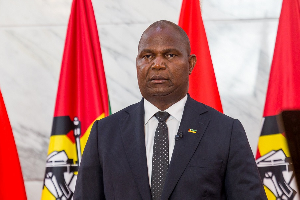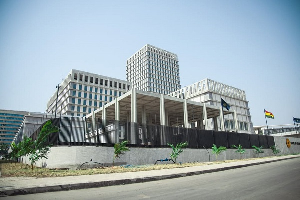Madam Anne-Claire Dufay, United Nations Children’s Fund (UNICEF) Country Representative in Ghana, has lauded Ghana's District League Table (DLT).
The DLT is a simple ranking tool that gives an overall assessment of district development across the entire country by ranking all of Ghana’s 216 districts to assess their level of social development from the district in first place down to the one in 216th place.
The DLT is the only tool in Ghana that allows stakeholders to track the progress of development across the country to determine which districts are making progress and which are struggling and need greater support. The Table aims to improve transparency and accountability in national development by making progress public.
Speaking at the launch of the 2018/2019 District League Table II in Accra, Madam Dufay said since its introduction in 2014, the DLT had proven to be a useful monitoring, social accountability and advocacy tool that helps to achieve Sustainable Development Goals (SDGs).
She noted that it was a holistic and multi-sector tool that provided evidence for enhanced decision-making as it allowed stakeholders to understand the geographical spread of social development.
She said as Ghana sought to achieve the SDGS, it was committed to leave no one behind, hence the DLT was useful to note disparities between Districts and regions in social sectors, as it could enable better prioritization, planning, resource allocation, and implementation.
The DLT is the result of a partnership between UNICEF in Ghana, The Centre for Democratic Development (CDD) Ghana, the Centre for Social Policies (University of Ghana), Ministry of Local Government and Rural Development, the Office of Head of Local Government Service, as well as Municipal and District Assemblies.
Madam Dufay recounted that in the 2017 DLT report, the Krachi East District in the Volta Region was recorded as the least performing district in Ghana. She said, she undertook a field visit to Krachi East last year and had the opportunity to interact with children, young people and mothers on various issues they were facing, and these included poverty, teenage pregnancy, girls’ dropout, early marriage, anaemia and other challenges.
The UNICEF Country Representative said in the meantime, some progress had been made in Krachi East (which now ranks 156 out of 216 districts), for the benefit of the population.
She pointed out that the 2018 DLT II report had revealed Asante Akim North Municipal, a little-known District in the Ashanti Region, was ranked first, while the District with the lowest ranking was Asokore Mampong in the same Ashanti Region.
“In relation to Regional ranking, Greater Accra is at the top, whereas Eastern Region is at the bottom,” she added.
She said that ultimately the objective of the report was to provide evidence to inform equity-focused decisions, so that all children and families had access to quality basic social services.
Mr Kwasi Adjei- Boateng, a Deputy Minister of Local Government and Rural Development, noted that the DTL would help the district assemblies to re-distribute their resources to be able to prioritize their development needs. Mr Adjei-Boateng underscored the need for citizens to hold duty bearers accountable and as well engage themselves in the development process.
Dr Franklin Oduro, Deputy Director, CDD-Ghana, also recounted that the overall aim of the DLT was not to ‘name and shame’ but rather help to change the mindset of people; to use information/data for policy direction and effective engagement.
Importantly, this year’s DLT II focuses beyond the overall scores and rankings of each district and had also analyzed and reported on and mapped out the sector level rankings; showing the level of performance for each district in five sectors only, thus, health, education, water, sanitation, and child protection.
Findings of the DLT II touched on; inequity between the top and lowest scoring districts as well as responsibilities of central government to address imbalances in resource allocation; and levels of inequity within districts, particularly large gaps between closely located districts.
It also touched on, difficulties in accessing data and useful indicators and lastly, the lack of adequate financial and administrative resources available to district assemblies to enhance local development.
General News of Thursday, 20 June 2019
Source: ghananewsagency.org













